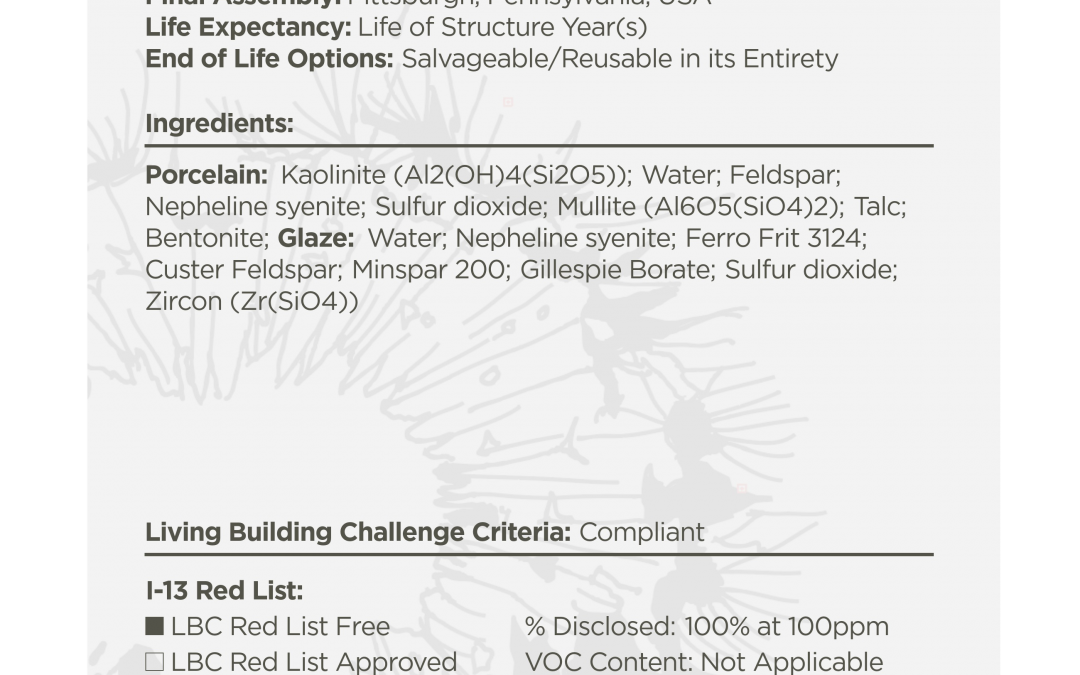
by William | Jul 14, 2021 | Healthy Living
Dear Readers,
This is just a quick blog on some exciting additions to the Living Building Challenge’s list of products with Declare labels. A “Declare label” put simply is essentially a ‘nutrition label’ that details what exactly goes into the making of a product, where it is made, and what to do with it at the end of its useful life.
Originally, when William and I first officially decided to pursue full Living Building Challenge certification, their Declare page didn’t have too much going on. Mostly office chairs and carpet tiles, really.
But now….there are products with Declare labels that we could actually use listed in their database! And not only could we use them, you probably could too! Which is so, so wonderful. If you would like to look at the current database on your own, you can go here: Declare – International Living Future Institute (living-future.org)
I, however, am only going to briefly mention to you a few of the particular products we find both exciting and applicable to our home’s design.
The first few I’ll mention are Owens Corning’s Foamglas Insulation and Verduren’s liquid linoleum floor. We are considering using these products for our foundation systems for our mulch basin and composting toilet tank enclosures. Both the Verduren flooring and the foamglas insulation are Red List free and have the potential to be recycled. The Verduren flooring is more recyclable than the insulation admittedly. But still. It’s cool. Just the fact that some manufacturers are willing to be open about what exactly goes into their products and where they are made is a step forward in a wide-spread recognition of both our footprints and handprints. Of course, additional independent research is always encouraged.
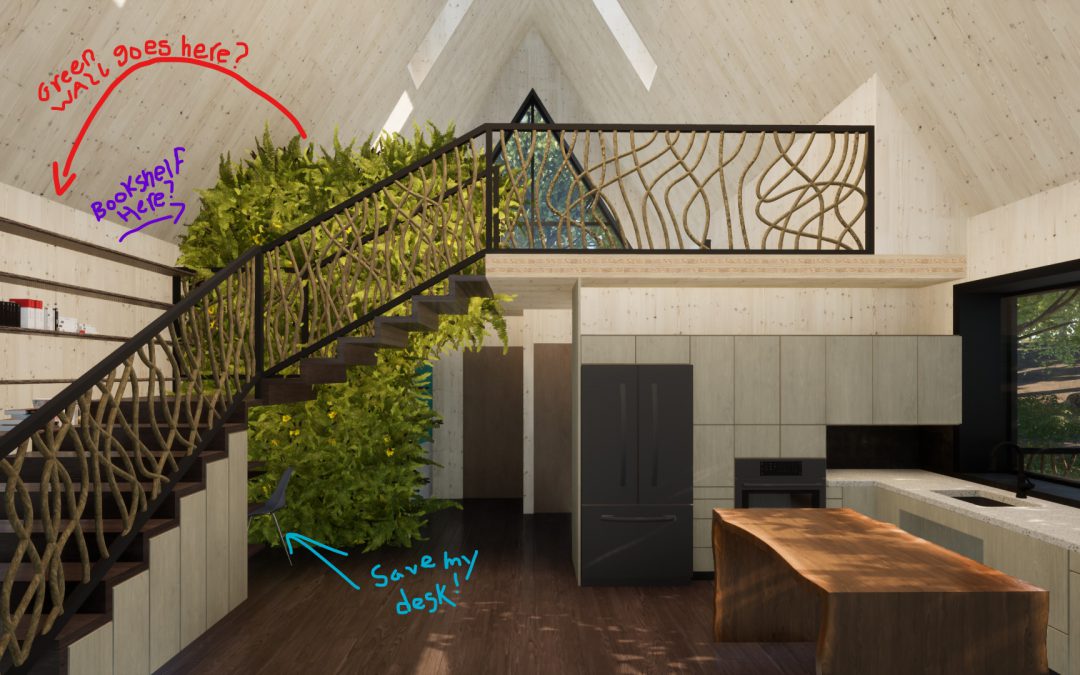
by William | Jun 30, 2021 | Net Zero
Dear Readers,
We have a slight conundrum. Nothin’ new…just thought I’d start working it out through writing, while simultaneously perhaps picking your brains for ideas 🙂
William and I have been working diligently to not only find ways to cut our overall water consumption so that we can comfortably rely solely on rainwater collection for all our potable and non-potable needs, but we have also been attempting to treat all of our wastewater on-site while still meeting PA DEP codes. If you have read “The Water Cycle of the Seed III?” then you are familiar with our aim to keep all of the treatment of the water within our home’s envelope in order to achieve our end goals and comply with said code.
Whelp, the PA DEP took the time to look at our home’s nifty water cycle diagram, and they were pretty unofficially ok with it! We will have to pursue an experimental permit, and verify a couple of things with our local code officials…but…overall, it was at the least a ‘green light’ to continue chuggin’ along with our current plan and see what becomes of it. Which is super exciting!!
However, that does lead to this latest conundrum: Given the ‘go ahead,’ we took a closer look at our mulch basin. We quickly realized that our mulch basin is going to receive a disproportionately large amount of greywater in need of treatment each day, in comparison to the amount of water that our prospective indoor green wall is actually going to need.
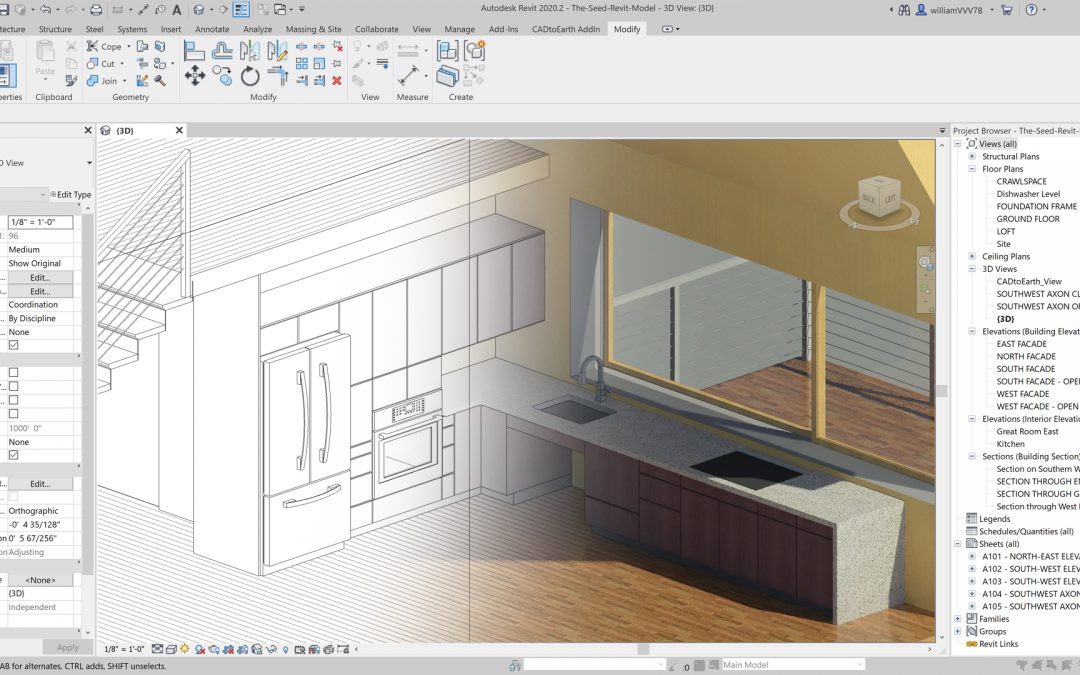
by William | May 26, 2021 | Small Footprint
Dear Readers,
The great thing about presentations is that they force William and I to accomplish tasks we would rather procrastinate on. For example, the rendering William completed for our presentation to Pittsburgh’s Green Building Alliance was, at best, rough. For this next presentation we have coming up for Philadelphia’s Green Building United, we want people to really see this beautiful image of our home we have revolving around in our own heads.
That means we need to hunker down and pick interior materials and products. And if you are attempting to meet the Living Building Challenge, that does not result in: “oh, let’s just go to Home Depot and see what we find today…”
When I look for a fridge, I need to know where exactly it is manufactured, does it have a Declare Label, does the refrigerator use any HFCs or does it rely on R600a (which has a lower global warming potential), and is the refrigerator itself made with any Red List chemicals? Not to mention if the fridge comes in the color and design William wants…oh! And how much energy does it actually use?
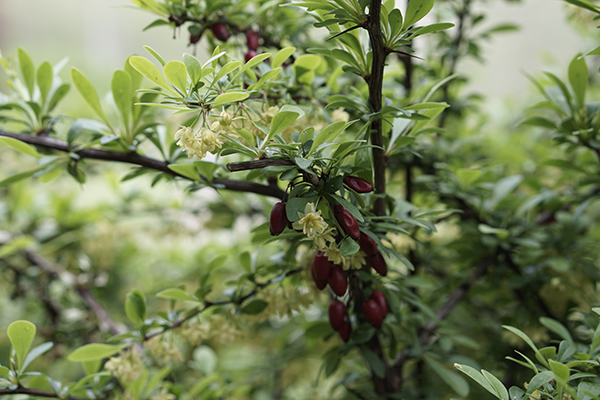
by William | May 5, 2021 | Healthy Living
Dear Readers,
What started as a rather appealing shrubbery in the late 1800’s, is now recognized as a Lyme harboring, nitrogen inducing, overall native tree and plant murderer.
Extreme, dramatic wording? Maybe. But still accurate? From what I can find, and see…yes.
The Japanese Barberry was first introduced to the United States as an ornamental plant in 1857. And it looks like this…
They can now be found from Maine to North Carolina. This one is in Pennsylvania, and as you can see, they have the potential to get huge…
While pretty with their winding tendrils and red oval-shaped berries…their danger lies in their vast greediness. Because of their overwhelming volume, they will literally suppress and smother native competing plants and little trees.
Japanese Barberry also have the ability to change the pH of the soil. Their leaves…their leaf litter…breaks down quickly in the soil and raises the level of nitrogen. The change in soil further eliminates native plants…so, not only does the Japanese Barberry smother…it poisons!!
And if smothering and poisoning native plants isn’t bad enough, Japanese Barberry also harbors and helps propagate the spread of Lyme disease. Beneath their voluminous tendrils, they create their own micro-climates by “…buffering extreme temperature and humidity fluctuations…” Which ticks love. And Lyme disease sure does love ticks. Research done by the University of Connecticut found that areas where Japanese Barberry bushes grew rampant had 120 Lyme infected ticks per acre. In comparison, areas where there were no Japanese Barberry had only 10 Lyme infected ticks per acre.
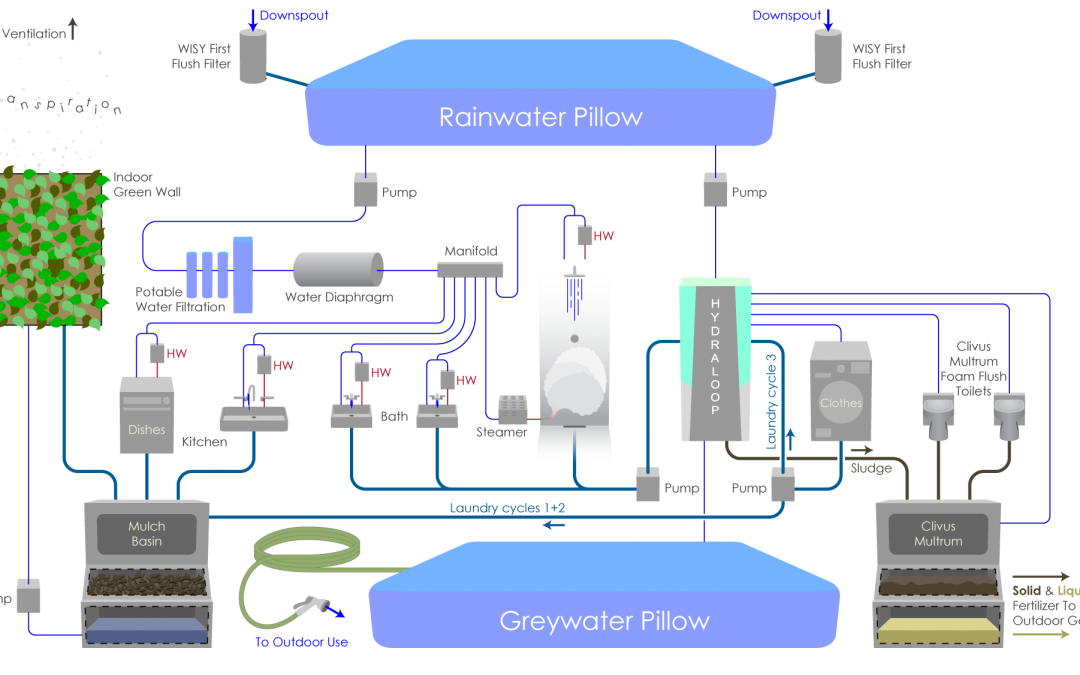
by William | Apr 28, 2021 | Net Zero
Dear Readers,
I think this is Round III of our plan to harvest and treat all of our water on-site…it may actually be round IV…or V. In truth, what version of the ideal we have bounding about in our brains does not matter. What matters, is this is what we have officially just shipped off for interpretation by code!
The goal we have set for ourselves is to meet the Water Petal as set by the Living Building Challenge, while also meeting PA Code. We want to not only maintain, but enhance, the safety and health of our surrounding natural environment and communities.
What you are about to read is essentially how we explained our system to the DEP. However, when I had some loved ones proof-read our email, they said it was overwhelming and boring.
So, I still sent our extensive email away to code.
While it is still certainly overwhelming, code does not care if it is boring. They just want to do their job and make sure we don’t jeopardize the health or integrity of our environment or neighbors.
But, to make it interesting for those who do find this overwhelming and boring, I am going to explain it in the context that you are a little, adorable, droplet of water. While small in stature, you are incredibly significant to our family’s, and the Land of the Laurel’s, survival.
My dear little droplet, your life has no real beginning or end. You just are. You belong to, and are a cycle that determines the life or death of every living being on this planet. For our story, we will begin with one of your many falls.
All excited and condensed with so many other droplets, it is now the time for you to let the weight of your condensation be pulled by gravity to the earth. Like a sneeze that has just built up for way too long, you finally let it go!
WeeeEEEEEEEEEEEEEEEEE!!!!!





